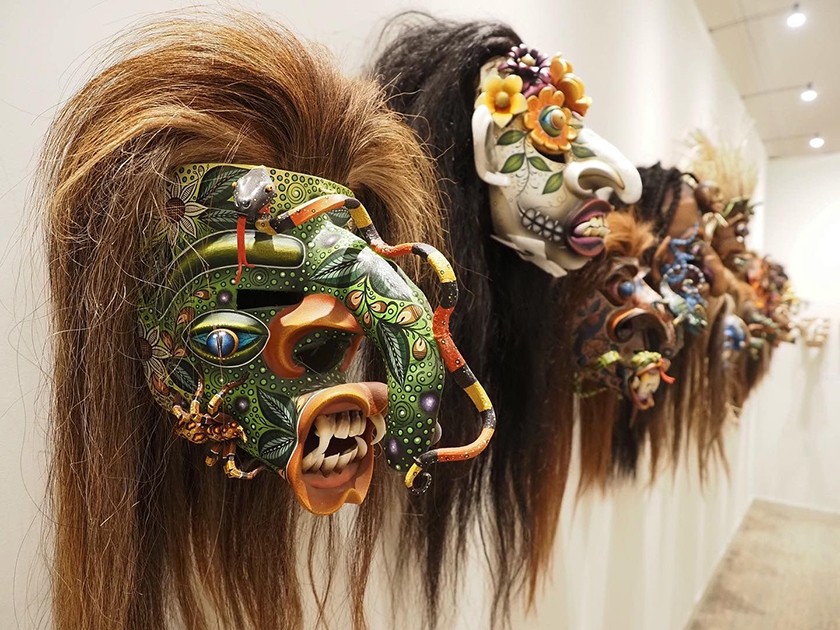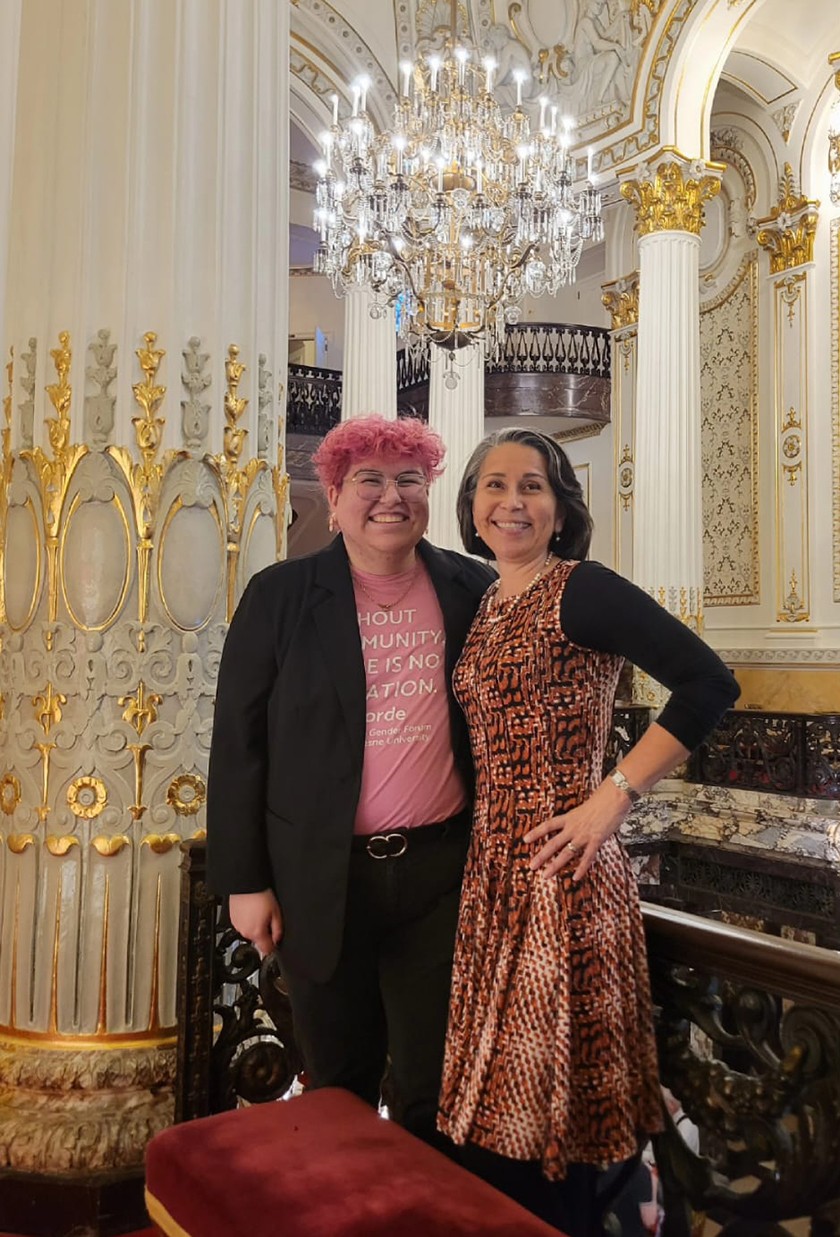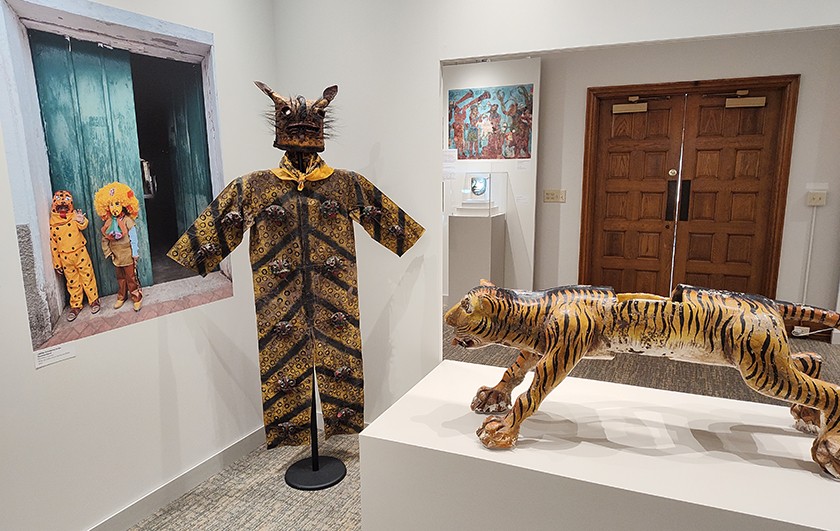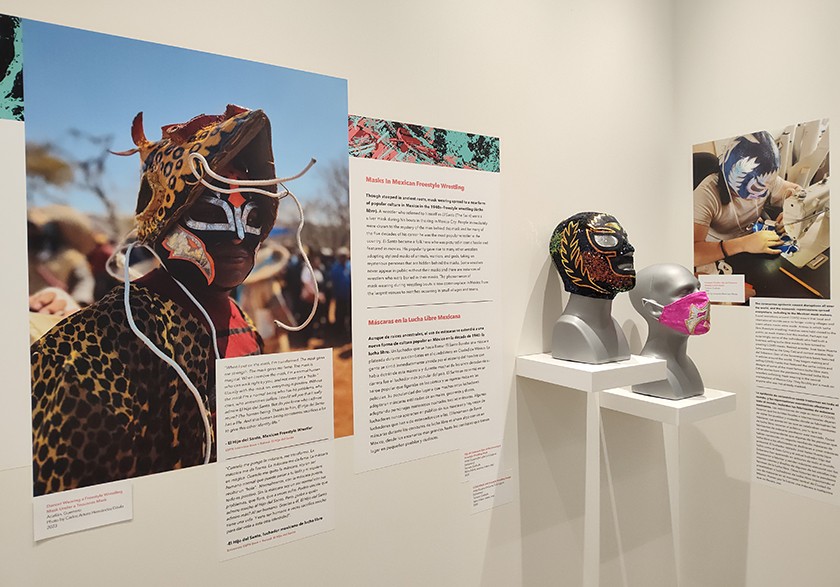Latin American Cultural Center exhibit in Pittsburgh moves local Mexican immigrant
“I’m speechless and I almost want to cry.”
My mom’s reaction to the Mexican Masks exhibit at the Latin American Cultural Center was so touching for me to experience. My entire life in Pittsburgh, I had never gotten to see my mom connect with her culture quite as deeply as when we went to see the exhibit at the LACC together.
Chelo Cruz, my mom, was born in Tamaulipas, Mexico, and moved to Pittsburgh in 1998. She lives far from her family, but she has found her own Latin American community in Pittsburgh through the St. Catherine of Siena Catholic Church in Beechview. And while this community is thriving and has supported a lot of Latine immigrants who have moved here, Pittsburgh still seems to not have much Latine representation in the public eye.
“The important part of this exhibition is that the masks are part of the central life of the village,” my mom commented as we watched videos projected on one of the walls.
The videos show masks just like the ones in the exhibit being used in ceremonial dances and festivities. On a wall further along in the exhibit, the “Danza de los Santiagos de Coscomatepec” depicts the heroic masked figure of Santiago battling a masked performer who represents evil incarnate along with anything evil that threatens the village, such as the smallpox virus which drastically affected the local population when it was introduced by Spanish colonizers.
As a parallel to the mask representing evil and the smallpox virus, the exhibit contains a section of masks that were commissioned as artwork related to the COVID-19 pandemic. The artists of these masks mirrored the traditional carved masks of Mexico with the added context of a modern enemy. A sizable portion of the masks in this exhibit were created within the last decade by artists looking to bring the same richness in culture that the traditional ceremonial masks bring to the villages that make and use them.
The most modern day twist of the masks included in this exhibit were the masks of Mexican “Lucha Libre” wrestlers. This section made my mom laugh.
“Whoever does not know El Santo and Blue Demon is not Mexican,” my mom joked about well-known Lucha Libre wrestlers.
Although this type of professional wrestling might seem like a violent activity, it has become a cultural symbol of hope and opportunity in Mexico. As my mom put it, the wrestlers “represented that which you could not be.”
In a way, these wrestling personas with their masks have continued the sentiment of carved ceremonial masks, hiding any fear behind and becoming a symbol that represents the people.
“To me, as a Mexican, obviously this means a lot to me, and it returns me to my roots, to my culture, to the history of each village,” my mom said as we were leaving the Latin American Cultural Center. “Of course, I think everybody that enters here is going to discover something they have never seen.”
Mexican Masks: Symbols, Celebrations, Satire, & Safety. Latin American Cultural Center. 4338 Bigelow Blvd., Oakland. Exhibit open now through April 2024. Visits are by appointment only. Schedule your visit at lacc.lasaweb.org





